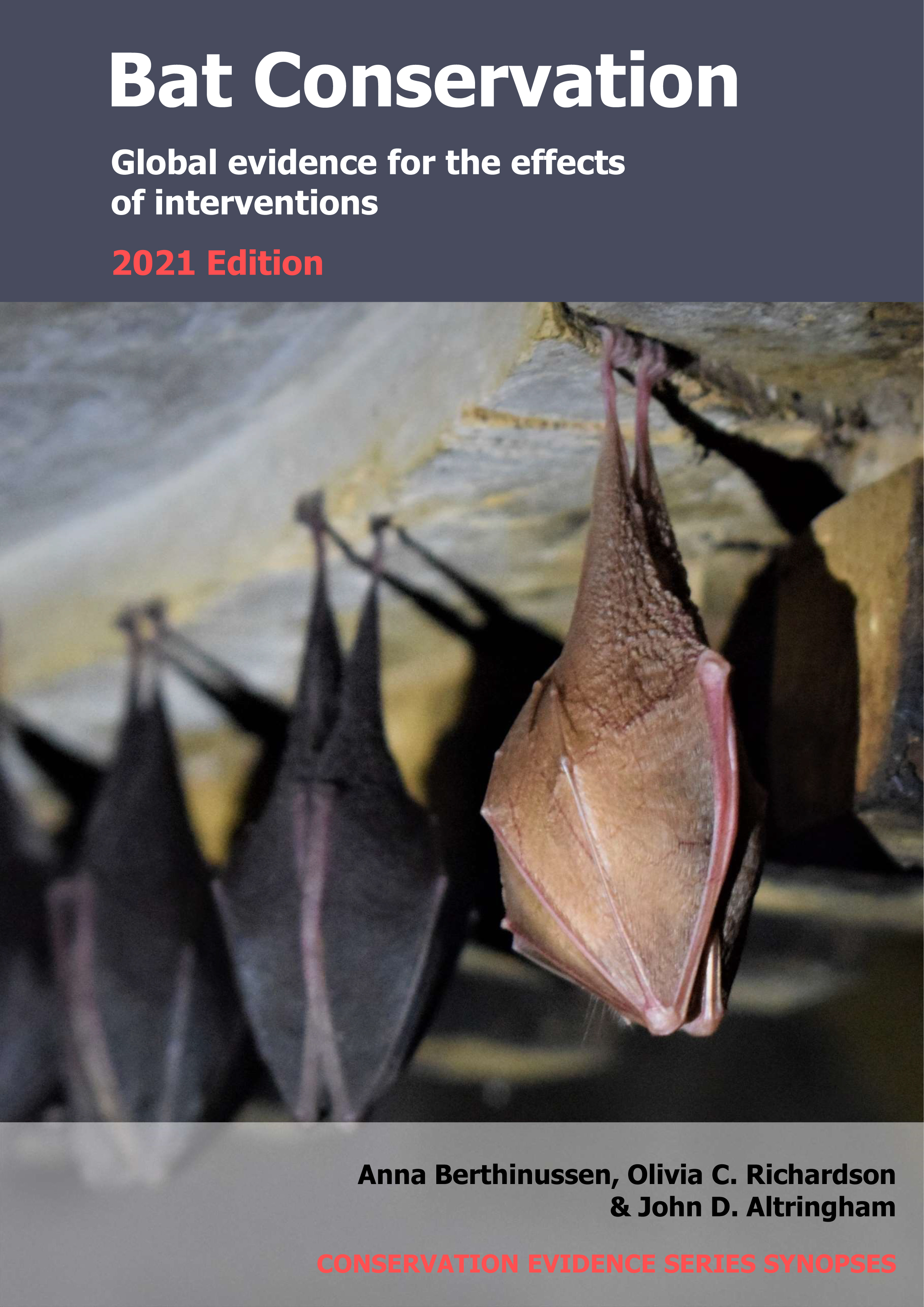Avoid illumination of bat commuting routes
-
Overall effectiveness category Likely to be beneficial
-
Number of studies: 3
View assessment score
Hide assessment score
How is the evidence assessed?
-
Effectiveness
70% -
Certainty
50% -
Harms
0%
Study locations
Supporting evidence from individual studies
A replicated, before-and-after study in 2005 at four canals in the Netherlands (Kujper et al 2008) found that unlit canals and canals illuminated with lamps had similar numbers of pond bats Myotis dasycneme flying along them at all of four sites, but bats were observed avoiding the lights. At all of four sites the number of bats flying along canals did not differ when they were unlit (122–493 bats) or illuminated with lamps (114–413 bats). However, at all of three sites where observations were made, bats changed their flight paths to fly around the light, with more bats doing so when lamps were facing along canals (96% of bats) than across them (28–42% of bats). At each of four sites, the canal was lit with a 1,000 W halogen lamp (1–30 lux with a 10 m range) either along the canal (three sites) or across the canal (one site). In July–August 2005, bats were surveyed during 2–4 unlit nights immediately before and after 1–4 nights with the lamps switched on. Two surveyors/site counted passing bats (at all of four sites) and made observations of behaviour (at three of four sites).
Study and other actions testedA replicated, controlled study in 2008 along eight hedgerows in the south of the UK (Stone et al 2009) found that unlit hedges had higher activity of lesser horseshoe bats Rhinolophus hipposideros, and bats were active earlier in the evening, than along hedges illuminated with street lights. Unlit hedges had higher lesser horseshoe bat activity (average 79 bat passes) than hedges illuminated with street lights (average 7–10 bat passes). Lesser horseshoe bats were also active earlier on nights when hedges were unlit (average 30 minutes after sunset) than on nights when they were illuminated with street lights (79 minutes after sunset). Each of eight hedges was illuminated with two portable high-pressure sodium street lights (average 53 lux). In April–July 2008, observations and bat detector recordings were made for seven nights at each of eight sites with a silent unlit control treatment for one night, a noise treatment on the second night (with the generator powering the lights), four nights with the lit treatment and a final night with a repeat of the noise treatment.
Study and other actions testedA replicated, randomized, controlled study in 2009 of 10 hedges in southwest England and Wales, UK (Stone et al 2012) found that unlit hedges had higher activity for two of five bat species or species groups than hedges illuminated with street lights. Higher activity was recorded along unlit hedges than illuminated hedges for lesser horseshoe bats Rhinolophus hipposideros (unlit: average 100 bat passes/night; illuminated: average 5–37 bat passes/night) and Myotis spp. (unlit: average 35 bat passes/night; illuminated: average 5 bat passes/night). Activity did not differ significantly along unlit and illuminated hedges for common pipistrelle Pipistrellus pipistrellus, soprano pipistrelle Pipistrellus pygmaeus or Nyctalus/Eptesicus spp. (see original paper for detailed results). Hedges were illuminated with LED street lights (24 x 2.4 watt high power LED’s). At each of 10 sites, two bat detectors recorded activity in May–August 2009 for six nights with each of five treatments: a silent unlit control treatment, a noise treatment repeated twice (with the generator powering the lights) and three lit treatments in a randomized order of low (3.6 lux), medium (6.6 lux) and high intensity (49.8 lux).
Study and other actions tested
Where has this evidence come from?
List of journals searched by synopsis
All the journals searched for all synopses
This Action forms part of the Action Synopsis:
Bat Conservation
Bat Conservation - Published 2021
Update 2020





)_2023.JPG)














